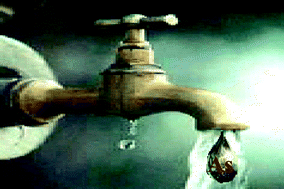Remediation of drinking water contaminated with arsenic by the electro-removal process using different metal electrodes
Abstract
The purification of water by the electro-removal process using different metal electrodes is widely used in different spheres of science and industry. The comparative characteristics under galvanostatic conditions of zinc (Zn), brass (Cu–Zn), copper (Cu) and iron (Fe) anodes for arsenic (As) removal from water by the electro-removal process in laboratory scale experiments were determined at current densities of 1.5, 3 and 12 mA cm−2 for 60 min, from a solution containing different concentrations of As(V) (from 70 to 130 μg L−1). The results at these different current densities indicated that rapid arsenic removal was achieved at higher current densities (12 mA cm−2), with the chemical precipitation of arsenate complexes. The removal of As was relatively efficient, with the following tendency (at 1.5 mA cm−2): Fe (>93%) ≅ Zn (>93%) > Cu–Zn (>73%) >Cu (>67%), these efficiencies were relatively independent of the removal rate for all the initial arsenic concentrations investigated. This behaviour is attributed to the electrochemical intrinsic properties of the most active metals, and to the chemical precipitation reactions following the electrochemical process, iron being the most attractive metal for arsenic removal for practical applications.


 Please wait while we load your content...
Please wait while we load your content...